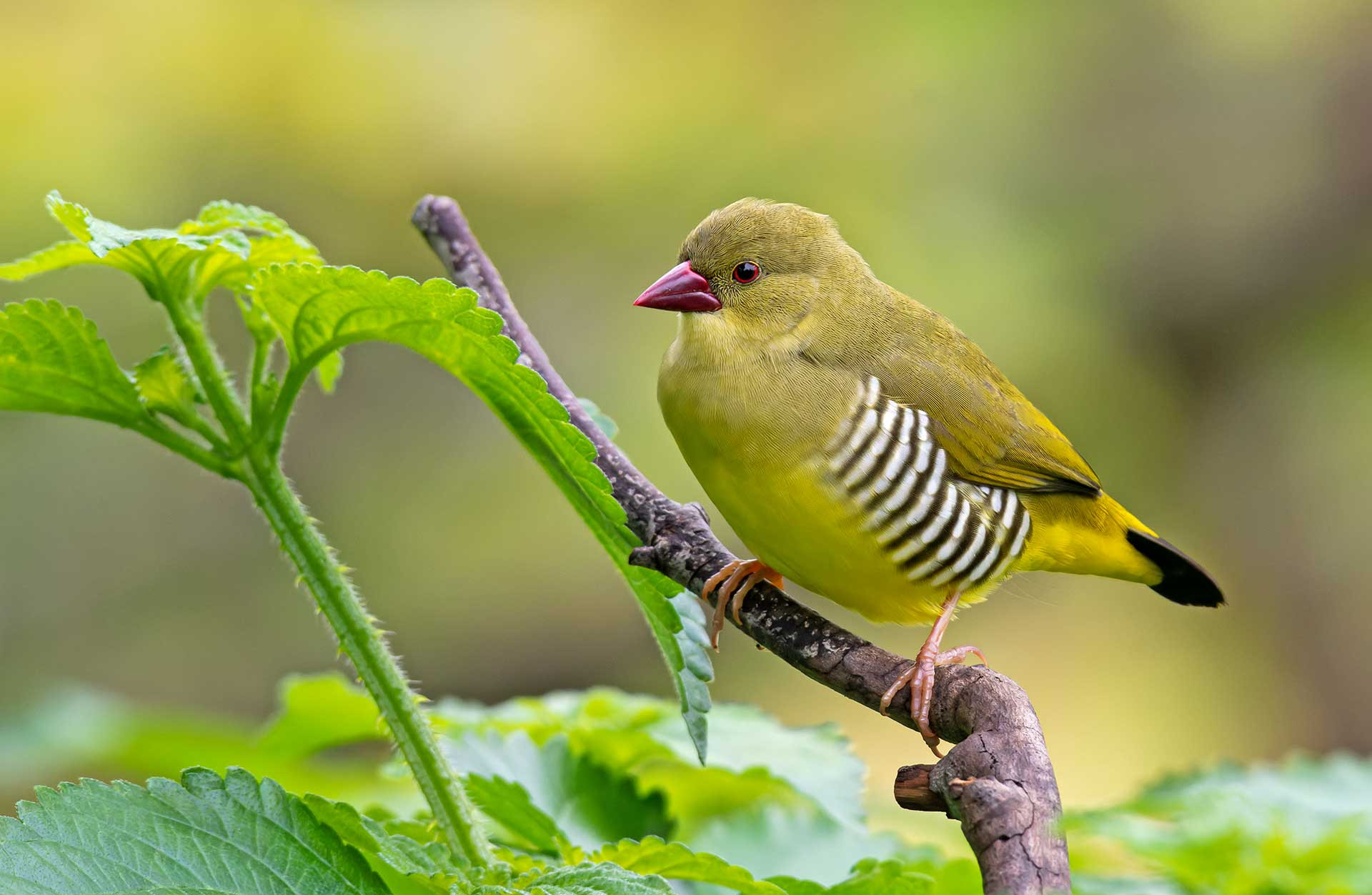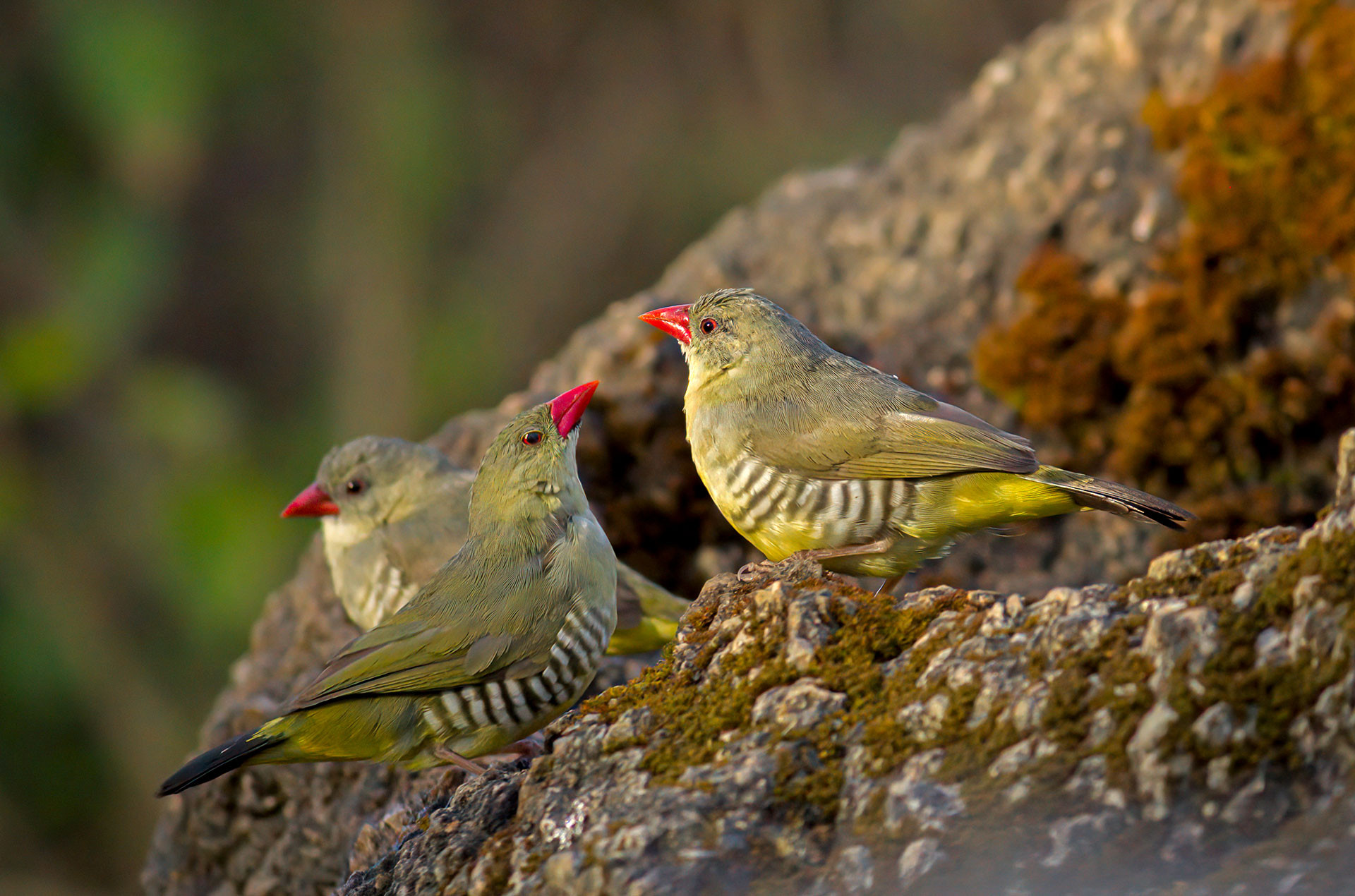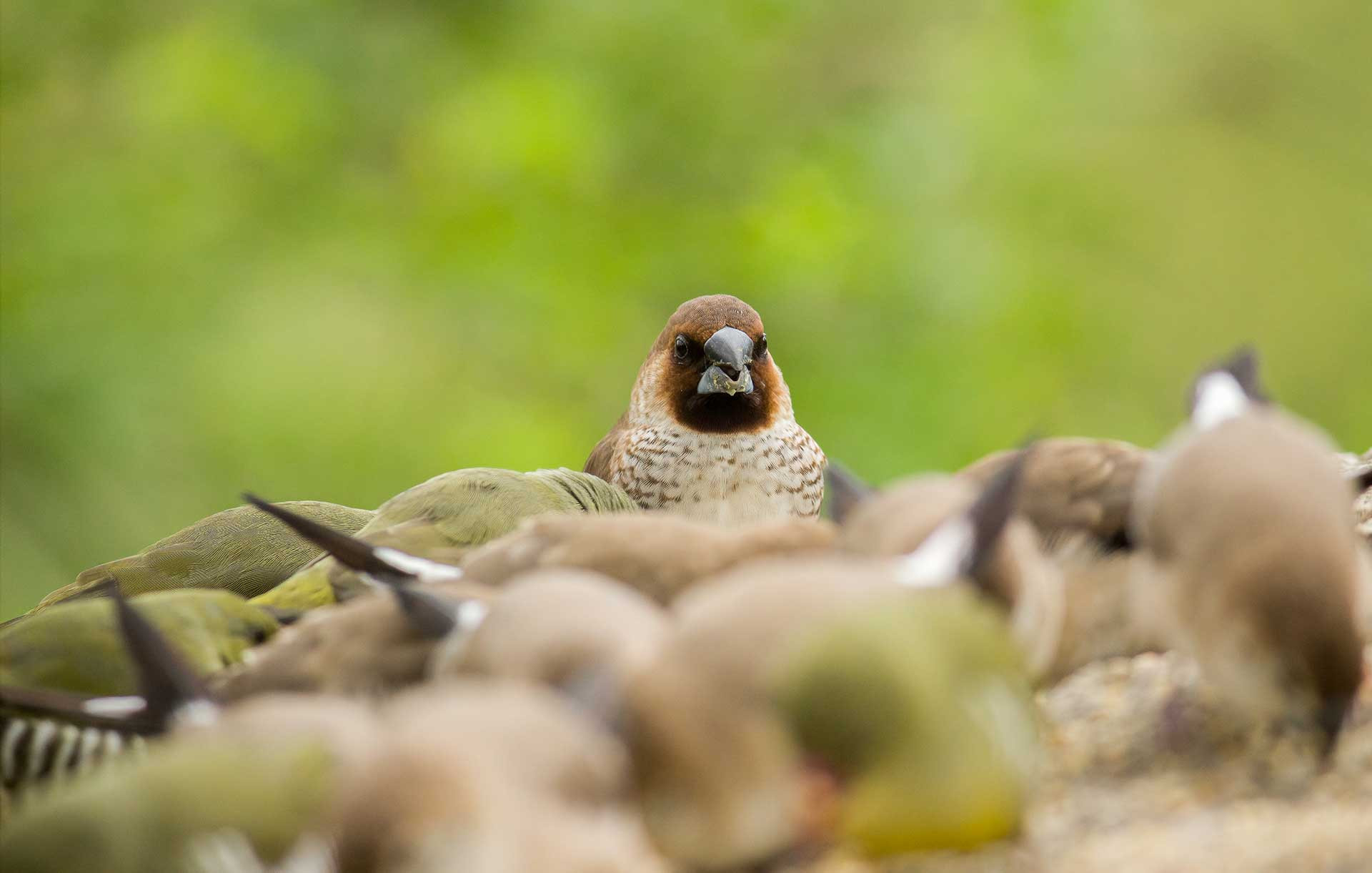It is a privilege to observe and document a globally threatened species at one’s doorstep, especially a bird as beautiful as the Green Avadavat. Often, how birds are named raises questions, as they tend to do injustice to the species. But there is little cause for doubt with the Green Avadavat or Green Munia. Its binomial name is Amandava formosa. ‘Formosa’, meaning beautiful or beautifully formed, is a perfect descriptor for the bird.
Mount Abu, a hill station located in the southern Aravallis (among the oldest mountain ranges in the world), is a stronghold of the species, especially the northern areas of Mount Abu Wildlife Sanctuary. These spectacularly coloured little birds are easily located by their calls and can be seen foraging on the ground near farmlands, perched on Lantana and Indian coral tree branches or hopping about the shrubbery near rocky outcrops and boulders. For birders wishing to tick the species off their checklist, Mount Abu remains the most reliable place to spot them. More recently, few populations have been seen in other areas within the southern Aravallis and a few fragmented areas of Central India and the Eastern Ghats.
Among the 180-odd species of birds found at the higher altitudes of Mount Abu Wildlife Sanctuary, Green Avadavats are the most prized by birders and photographers. Sadly, these songbirds with attractive olive-green plumage and prominent zebra-barred flanks are much sought-after in the unlawful bird trade. Consequently, Green Avadavats have a declining population trend within their extremely restricted range. Although classified as Vulnerable on the IUCN Red List of Threatened Species, the illegal trade of these birds continues to flourish since they are found in flocks, making their capture easier and illegal trade more lucrative. During my visit to illegal bird markets in early 2022, I found the species still being traded unlawfully. According to the State of India’s Birds Report 2020, the Green Avadavat is 'a species of high concern’ that is ‘severely threatened’, ‘neglected’ and ‘dangerously low abundant’.
Other members of the Estrildidae family found at Mount Abu Wildlife Sanctuary are the Indian Silverbill (White-throated Munia) and Scaly-breasted Munia (Spotted Munia). The more commonly found Red Avadavat has been erroneously reported in some studies and records from Mount Abu. Despite having a large range, spanning much of South Asia, it is not found in the region. Similarly, reports of the Tricoloured Munia (Black-headed Munia) have been incorrectly reported from the local area in previous studies.
Mount Abu boasts a rich floral diversity with subtropical thorn forests at its foothills and bamboo and semi-evergreen forests along waterways and valleys at higher altitudes. Due to the presence of a wide range of habitats within a relatively small area in an otherwise dry region, Mount Abu harbours a rich and unique faunal and avifaunal diversity. These dry forests transform into a lush green landscape at the onset of the monsoon.
Apart from the obvious threat from trappers, habitat fragmentation and loss, the annual arson of the forests of Mount Abu by intentionally setting wildfires during spring and the dry summer months has become a serious concern. Over the past decade, the frequency and intensity of fires have raised alarms.
The hillsides of Mount Abu are experiencing ‘severe environmental degradation’, reported a 2017 study. The consequences of unmanaged tourism and unchecked development have resulted in serious environmental harm across the declared eco-sensitive zone. Relatively untouched habitats are being altered by increasing traffic, encroachment, deforestation and unmanaged wildfires. Added to this is the threat of indiscriminate use of pesticides and chemical fertilisers on local farms.
A greater degree of awareness, vigilance to curb environmental violations, and consistent enforcement of laws and measures to protect the habitat is required to safeguard the resident Green Avadavat population. A long-term monitoring project is being undertaken since there is a pressing need to identify local populations through surveys.
A birdwatcher recently asked me whether I ever become tired of observing and photographing the Green Avadavat. Living side-by-side and watching the same birds every day, the charm and novelty can wear off quickly. For me, this is a privilege that I don’t take for granted. It may take another nine lives of spying on the avadavat to satisfy my obsession with them!
This piece is an edited version of an article which first appeared in Resurgence & Ecologist Magazine and BirdWatching Magazine.








